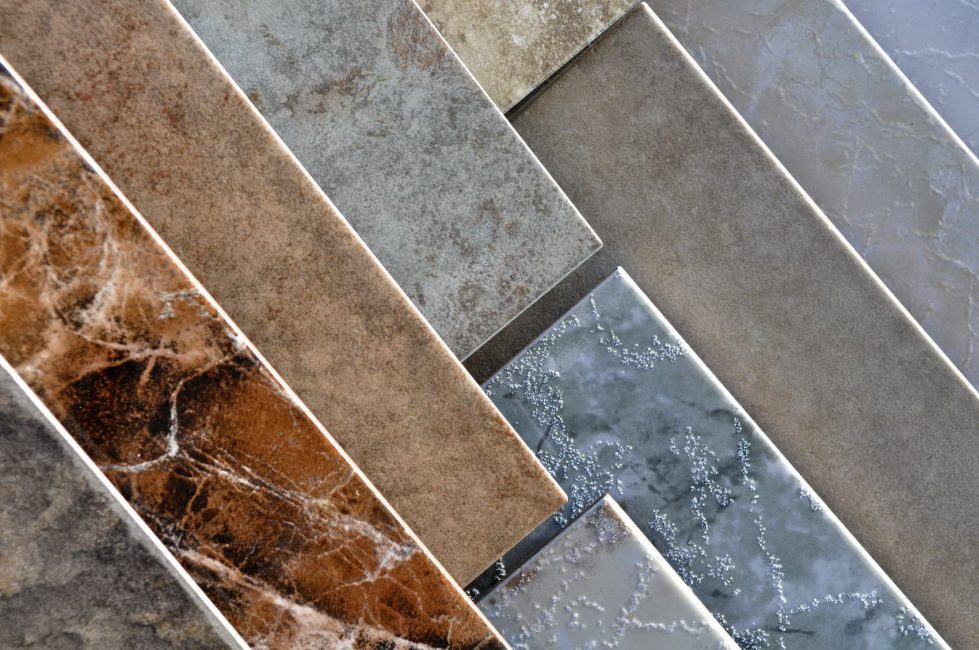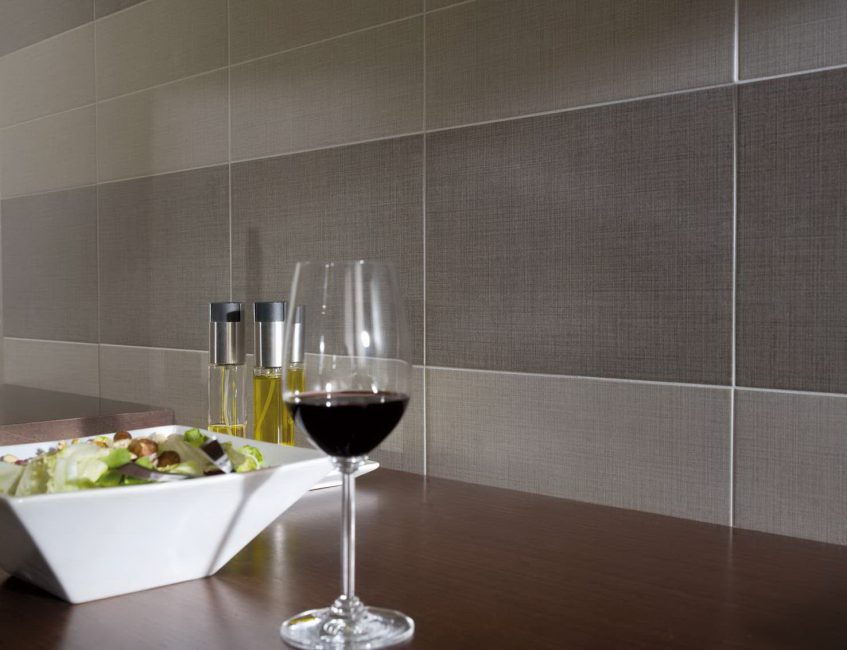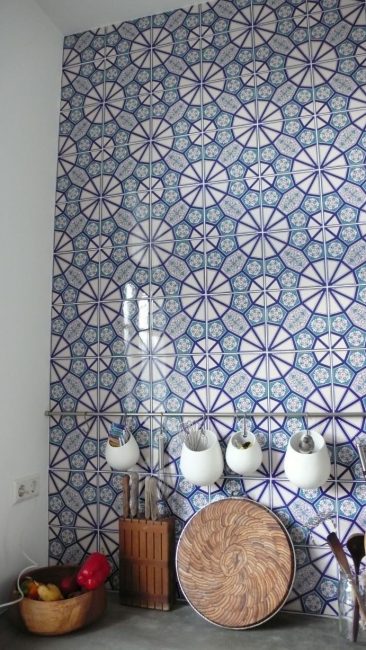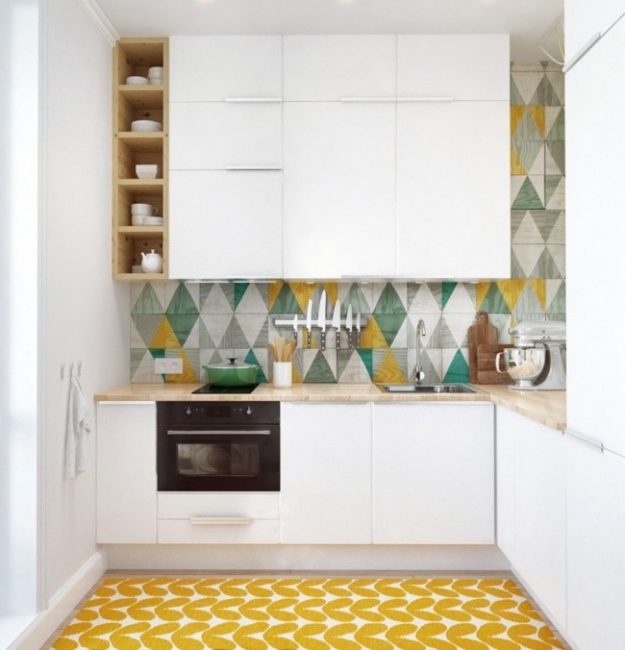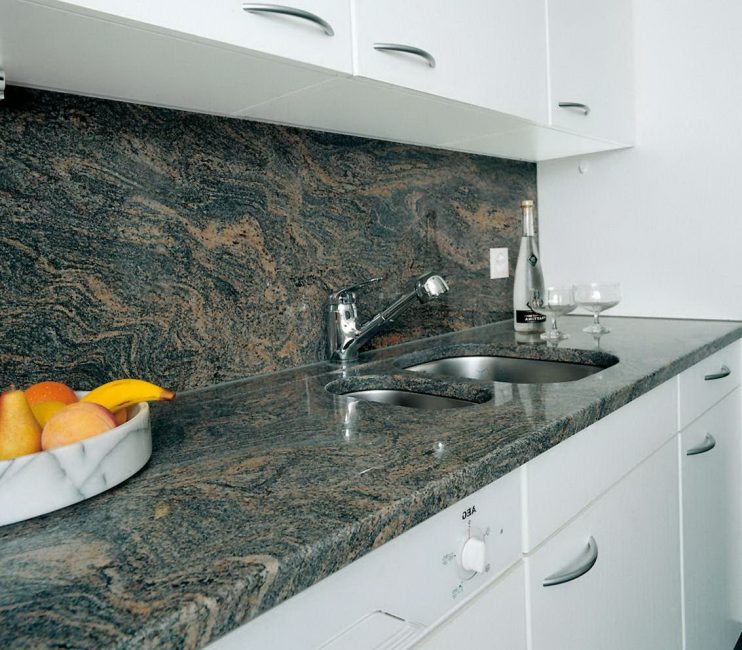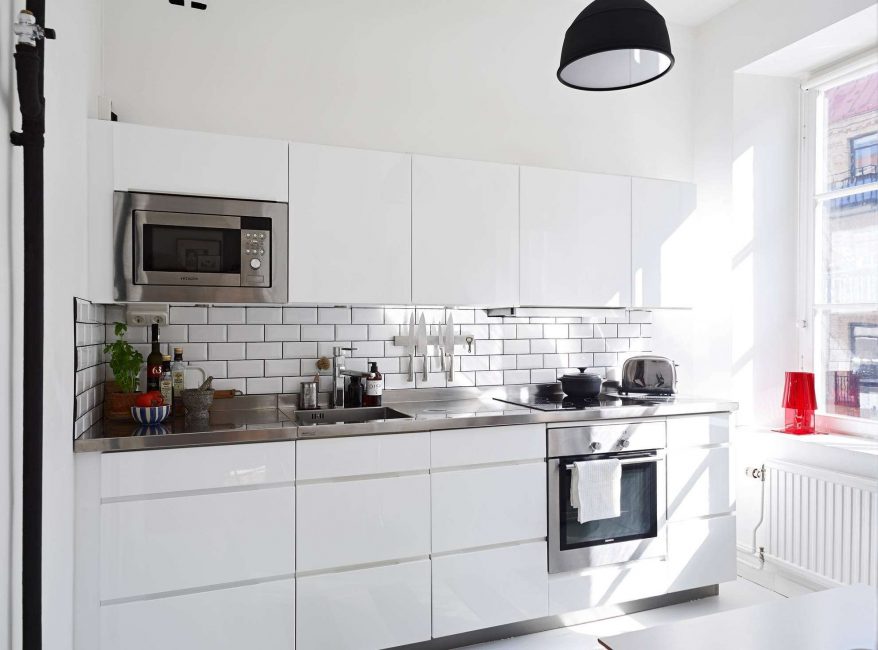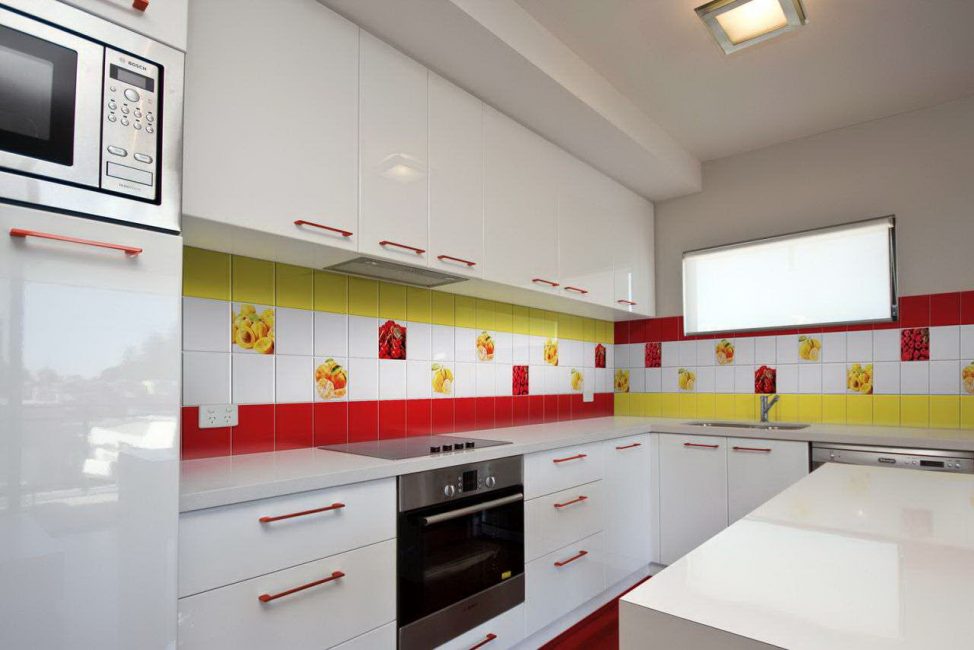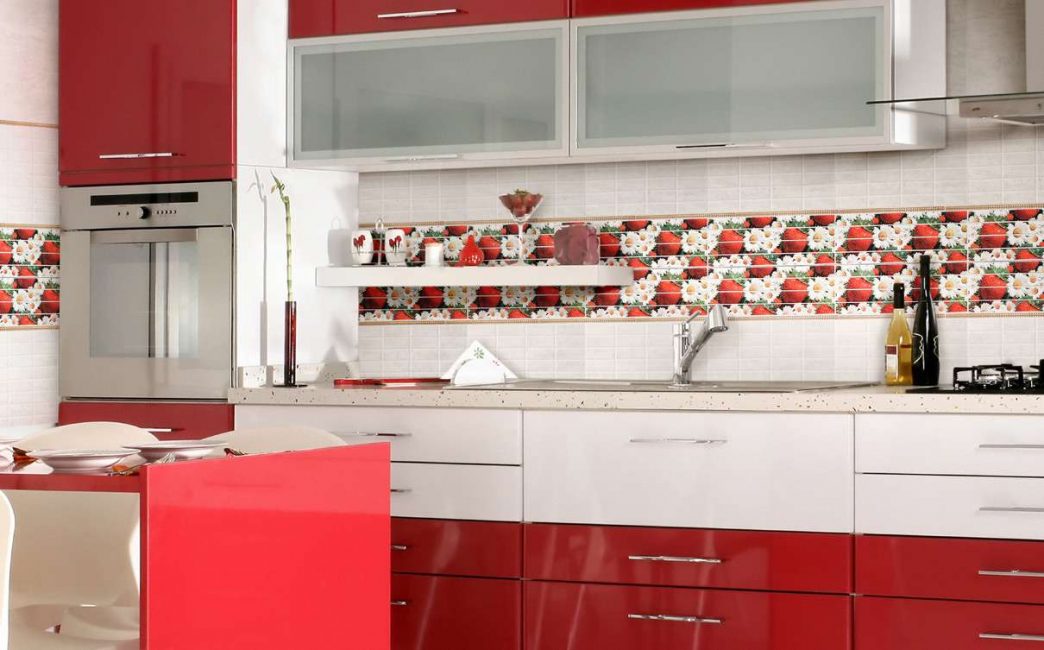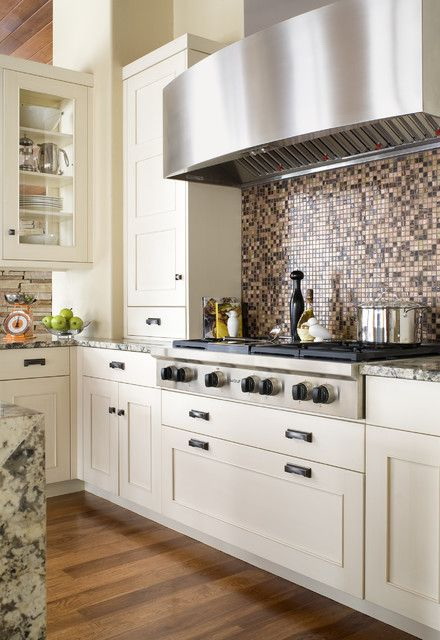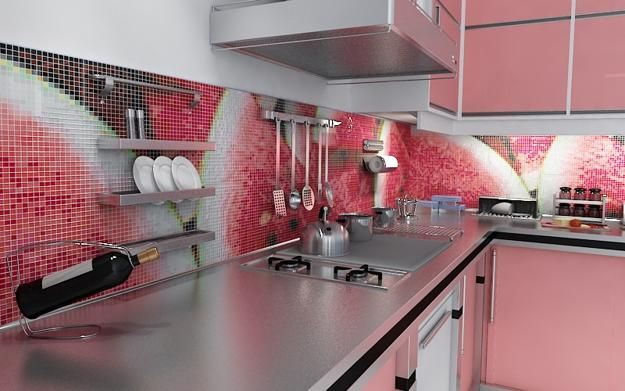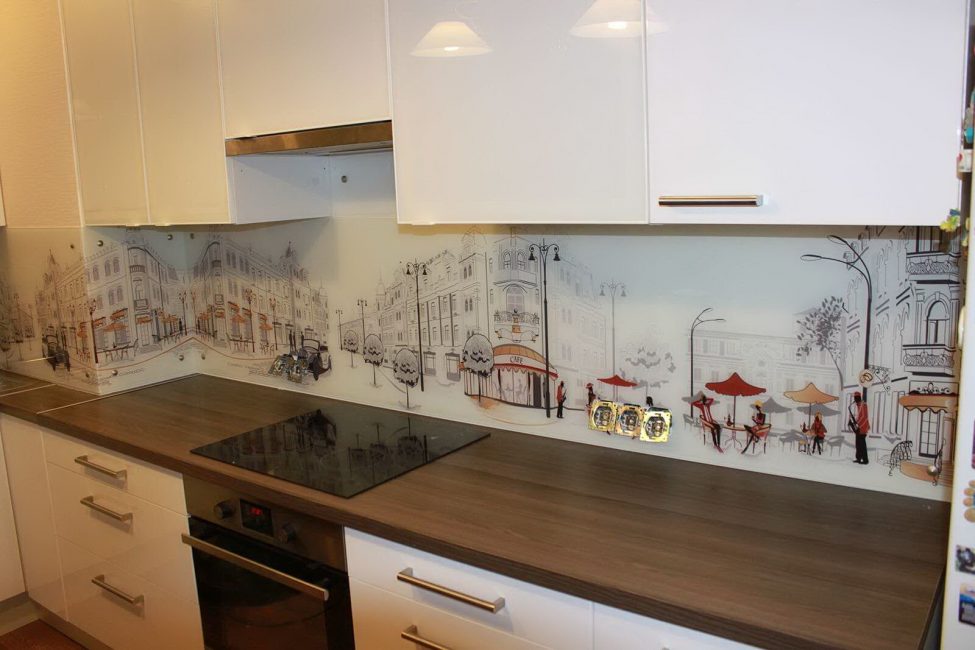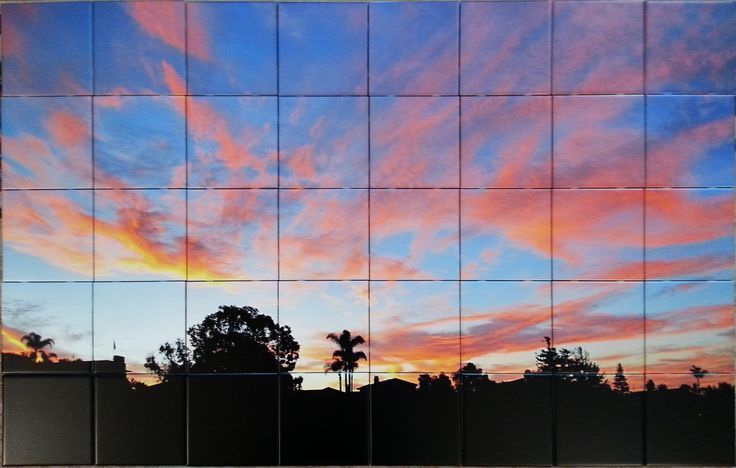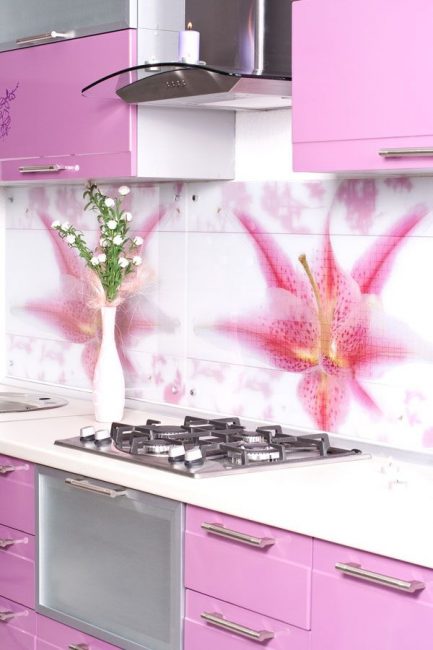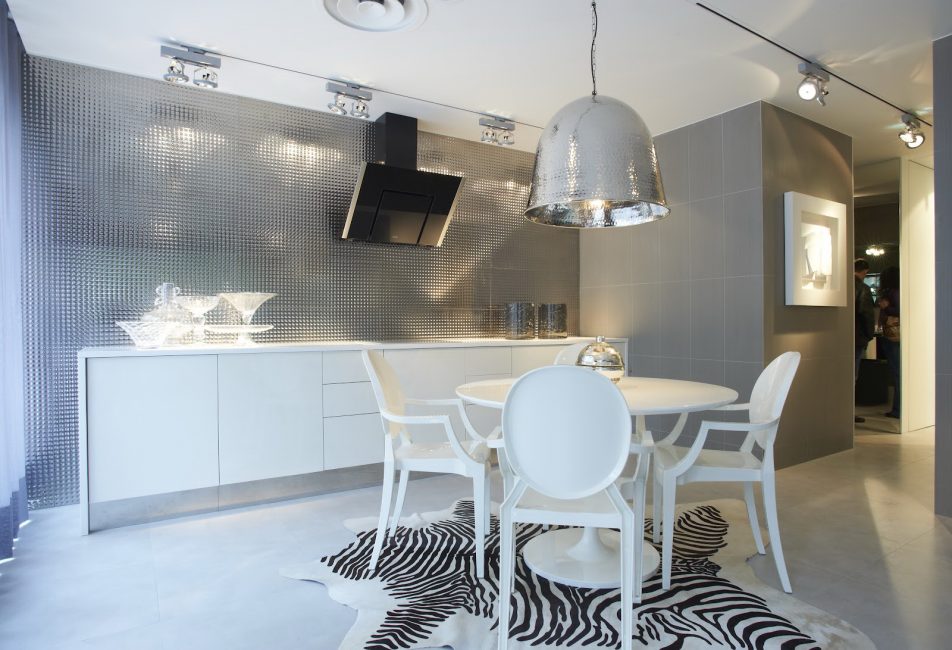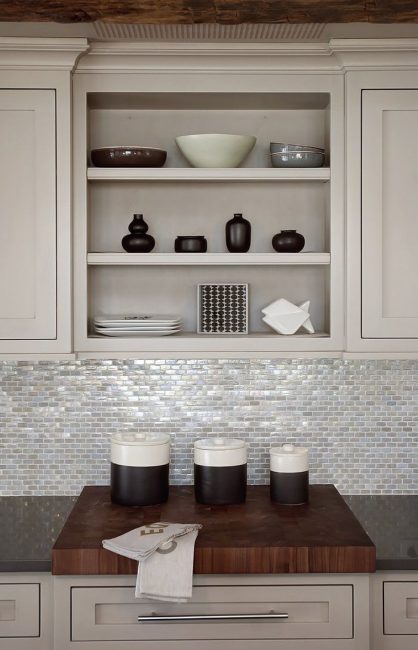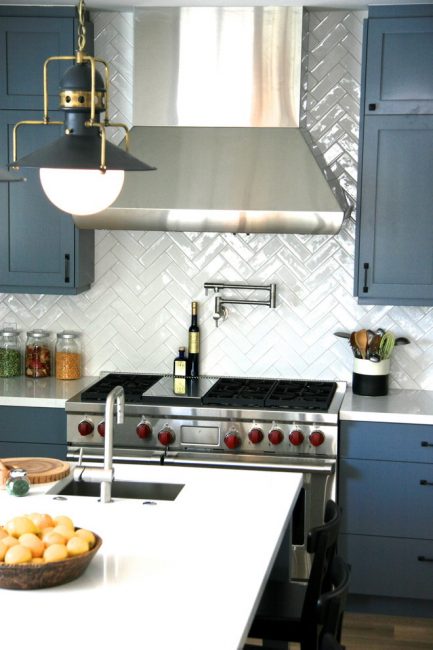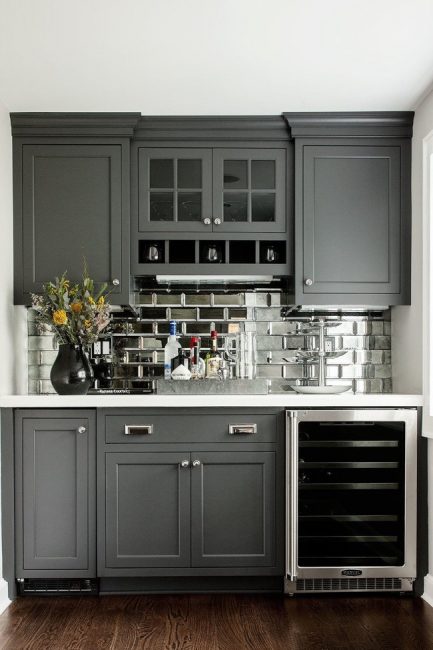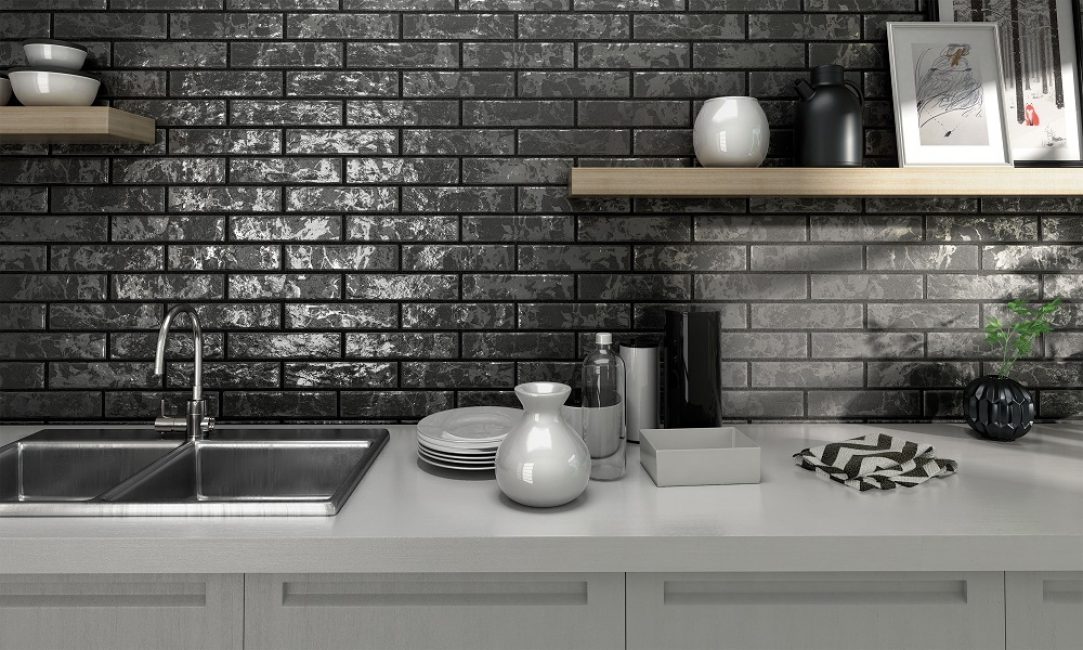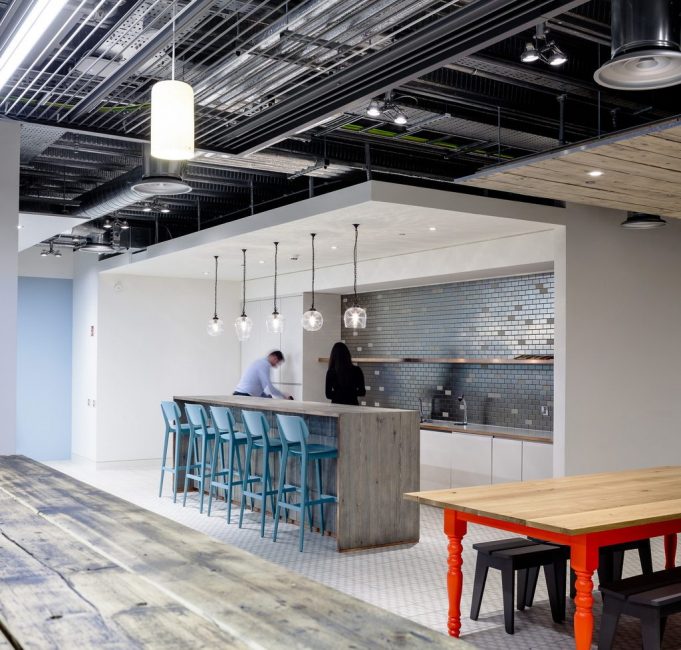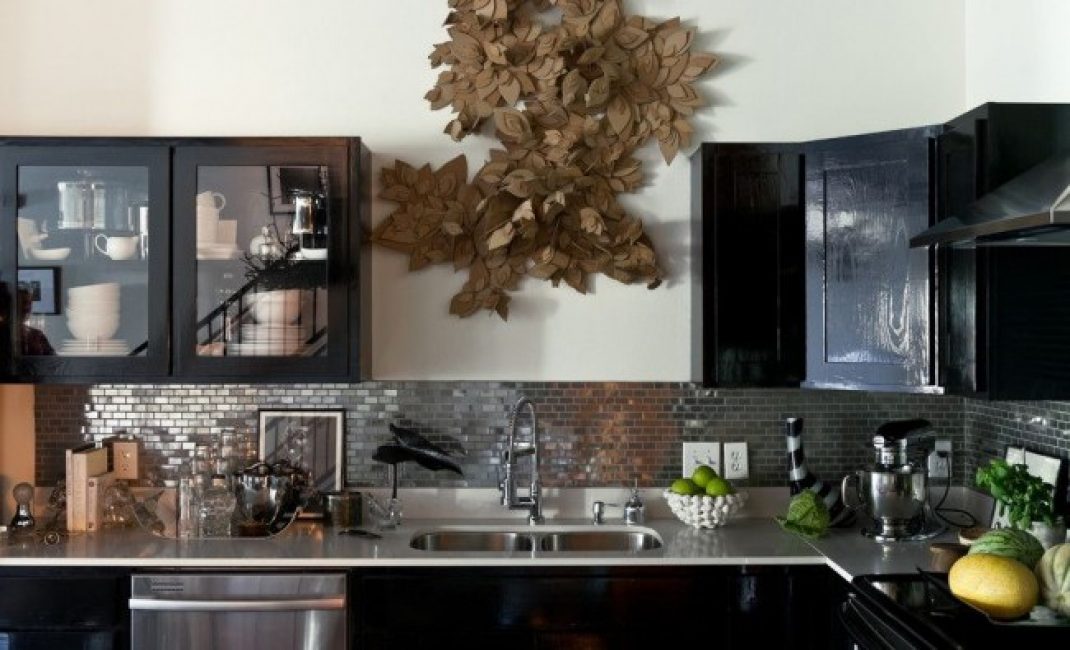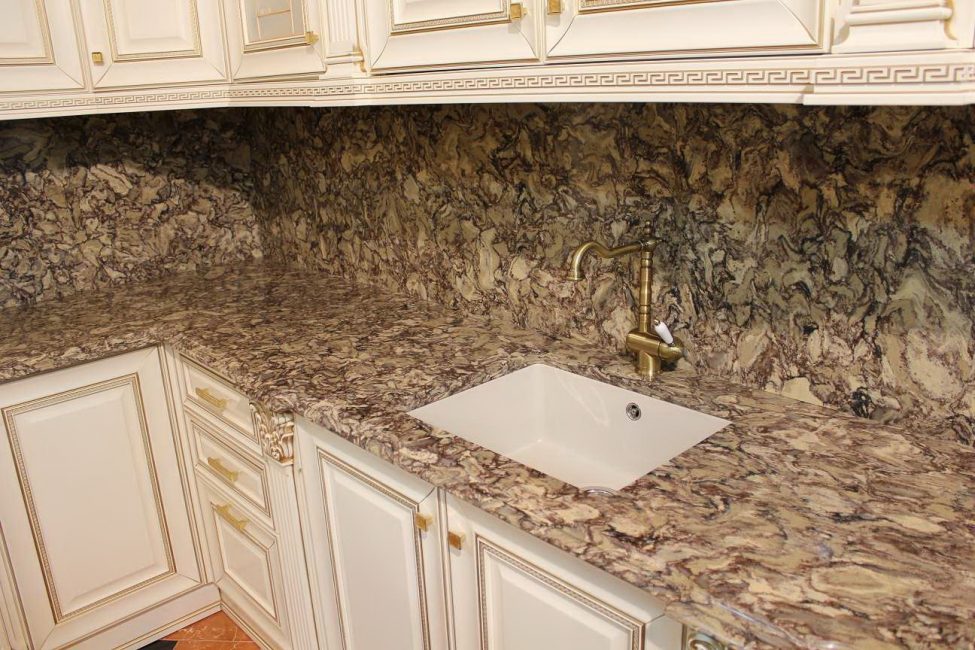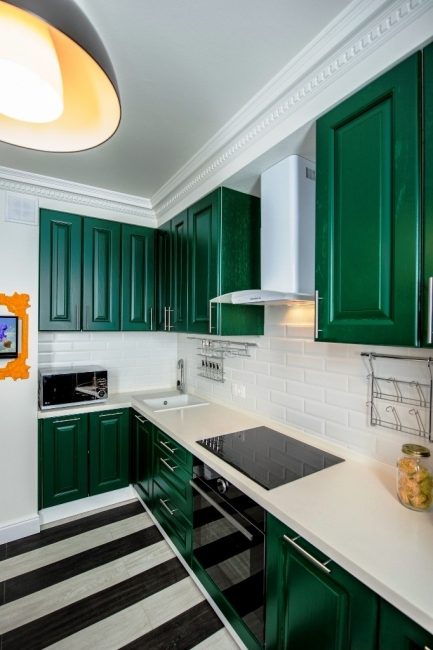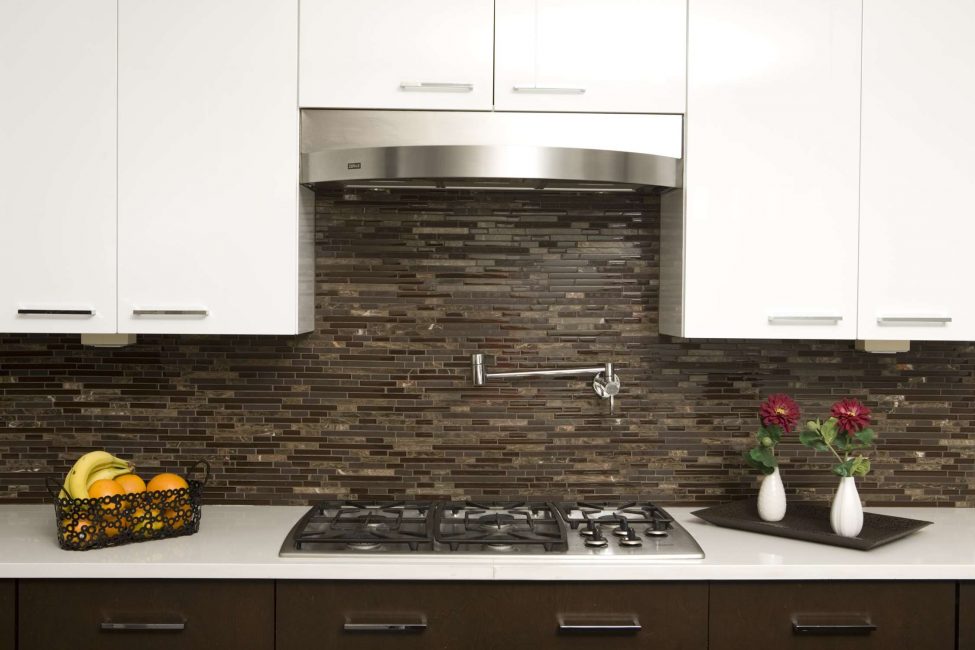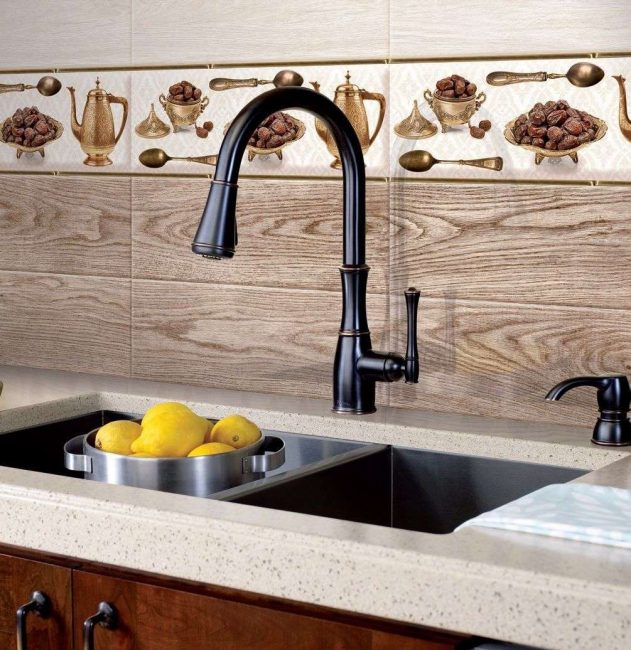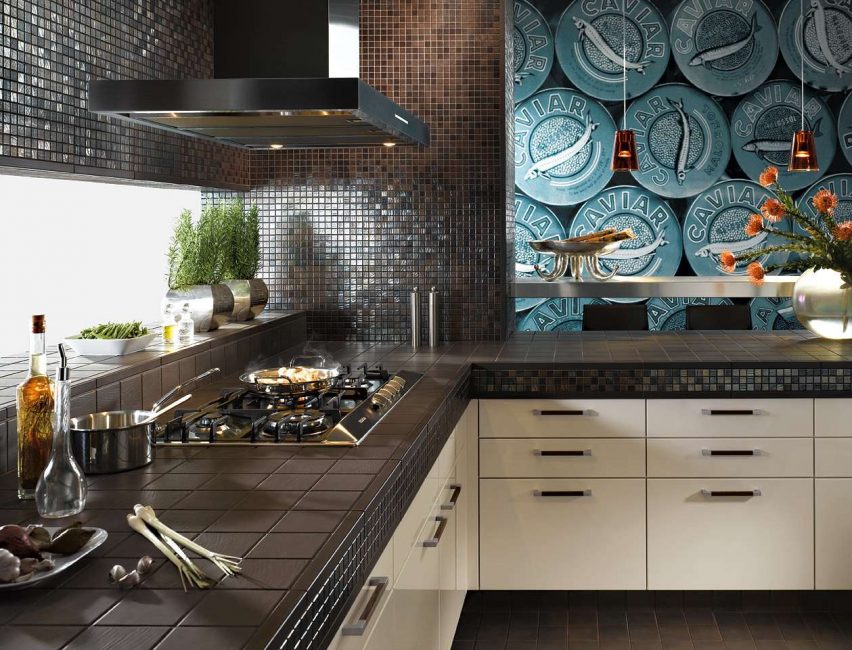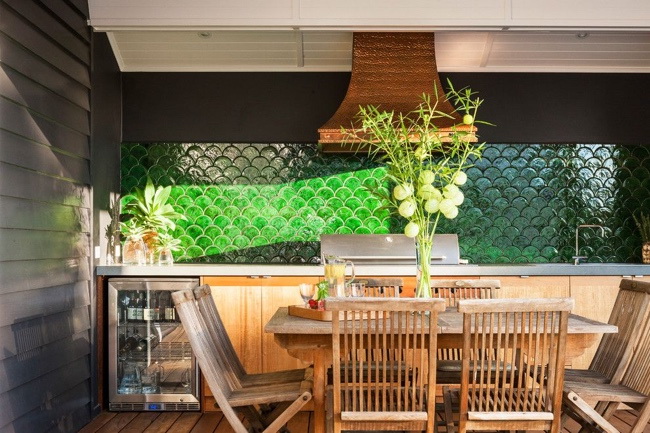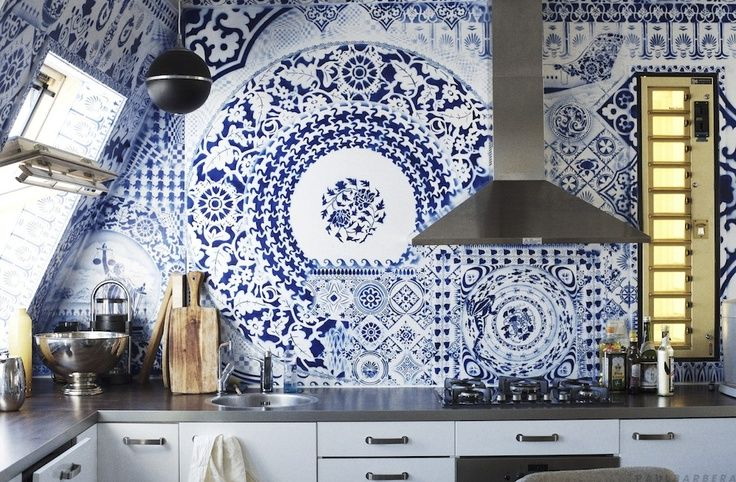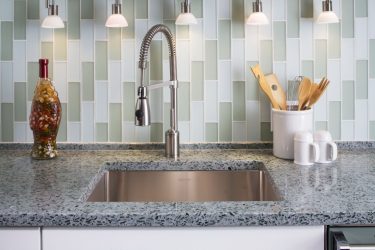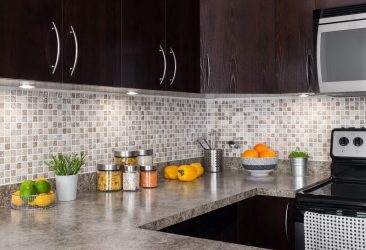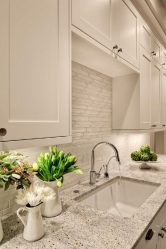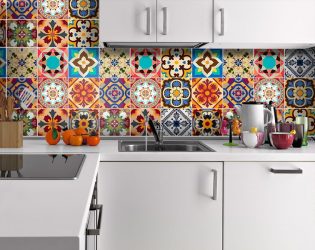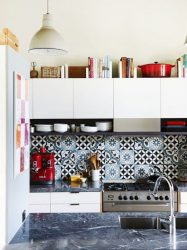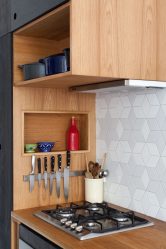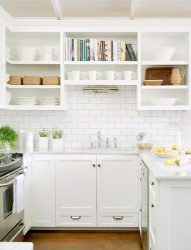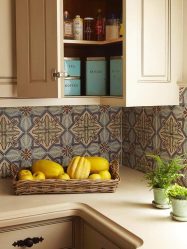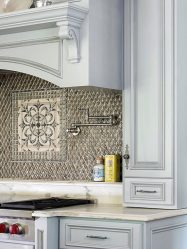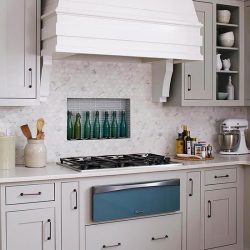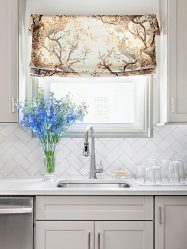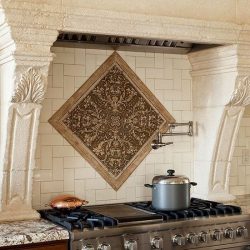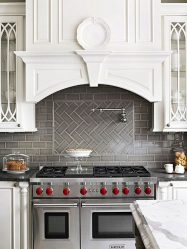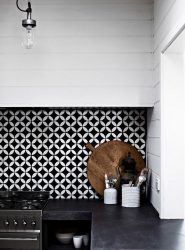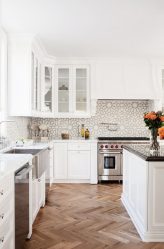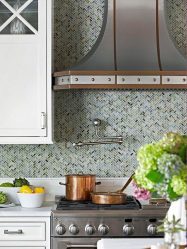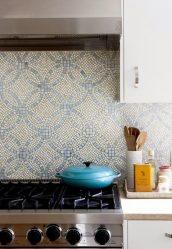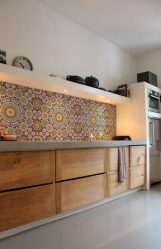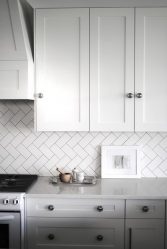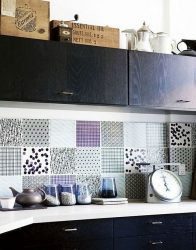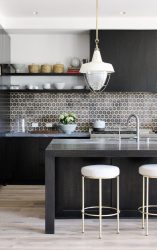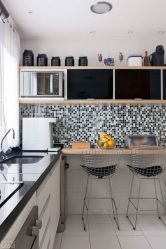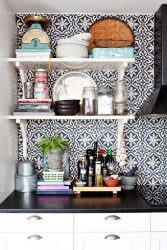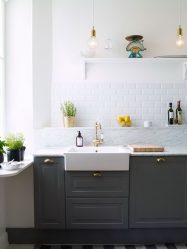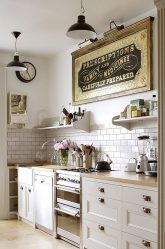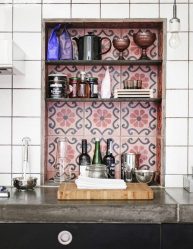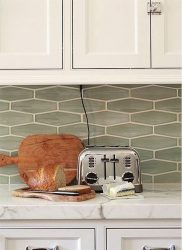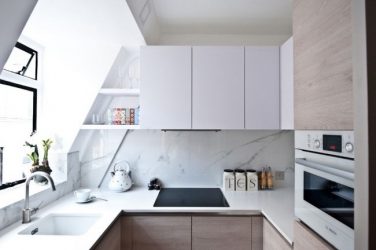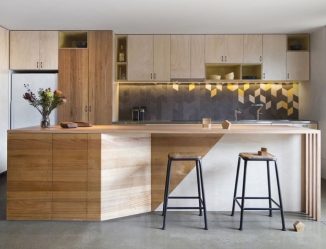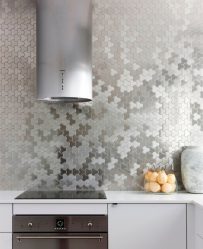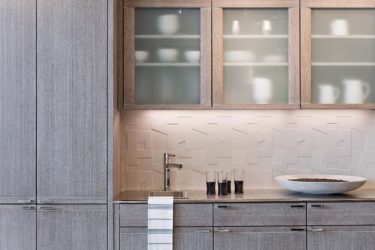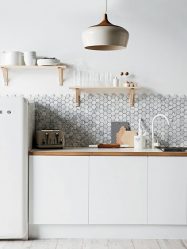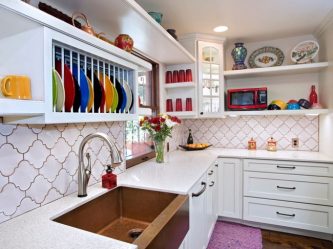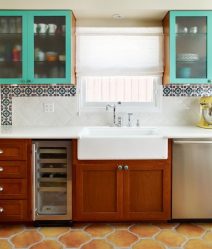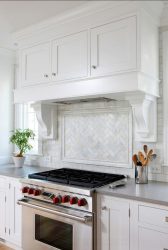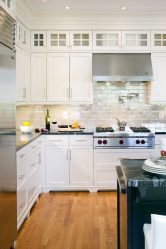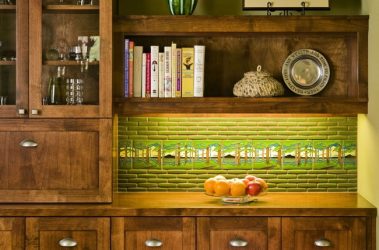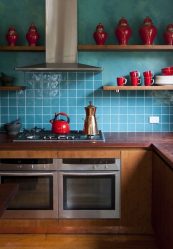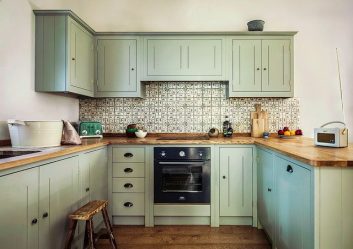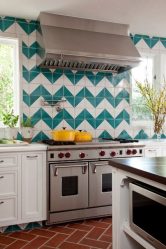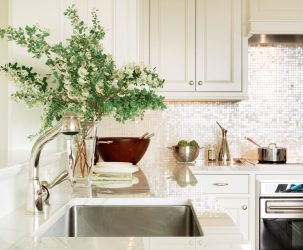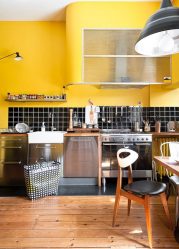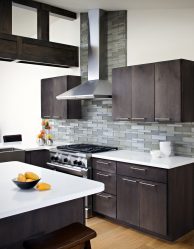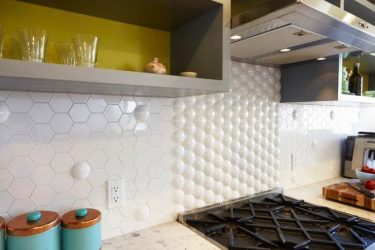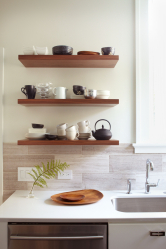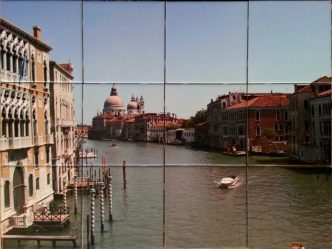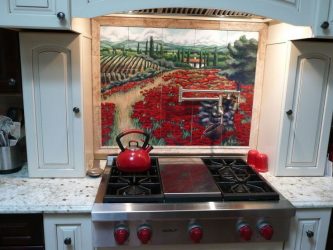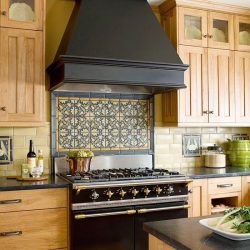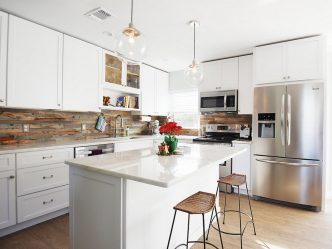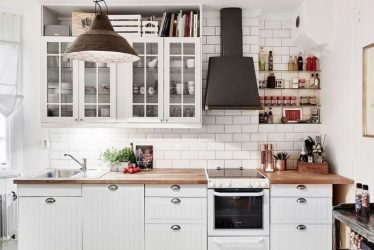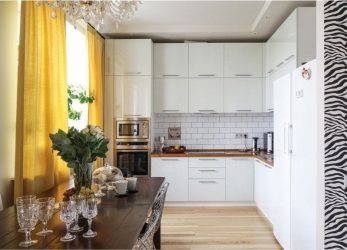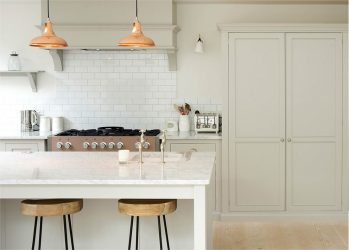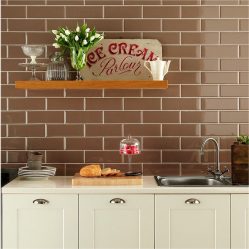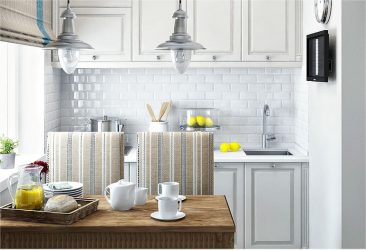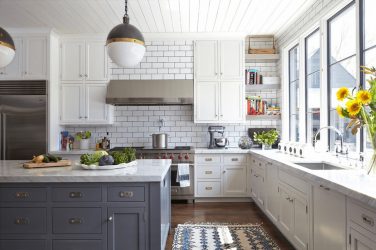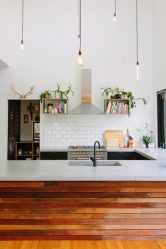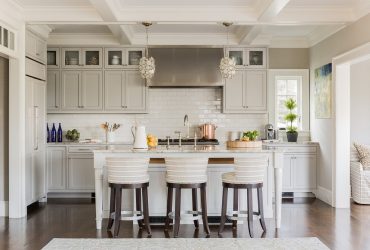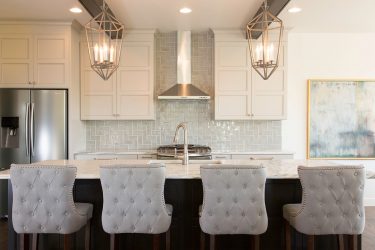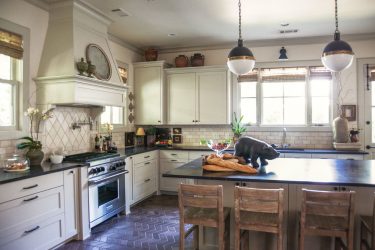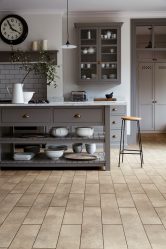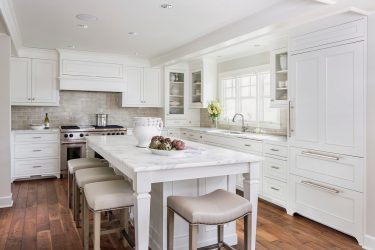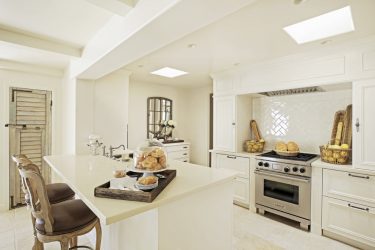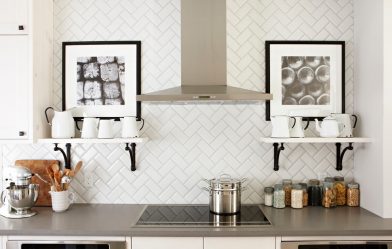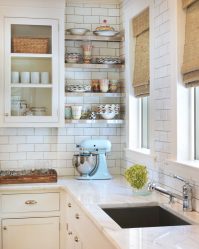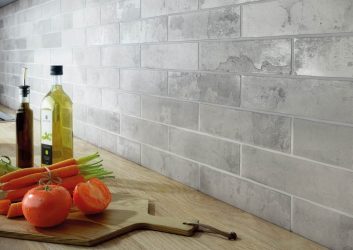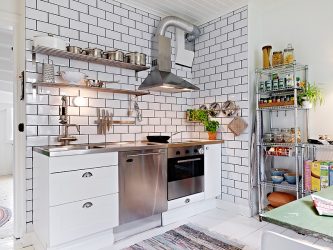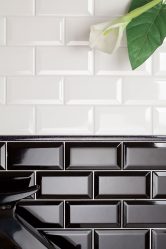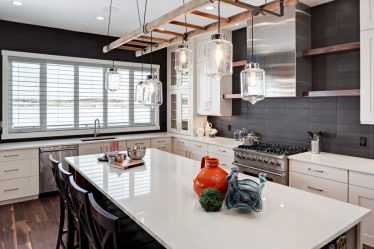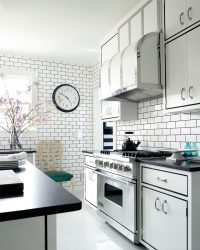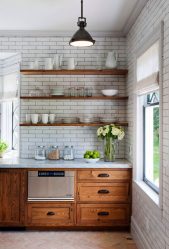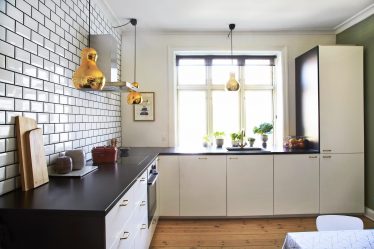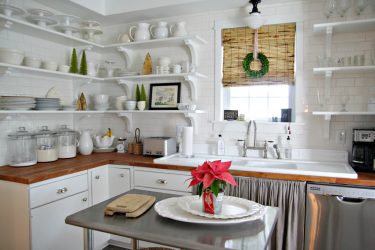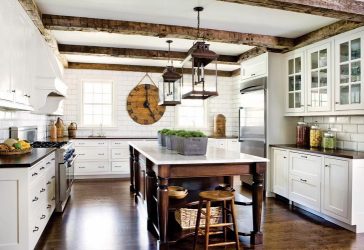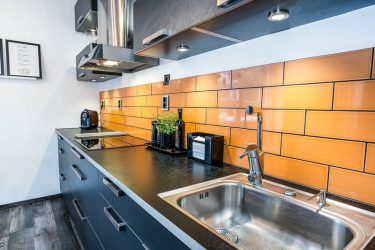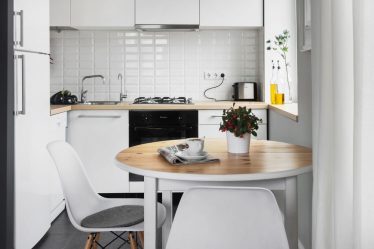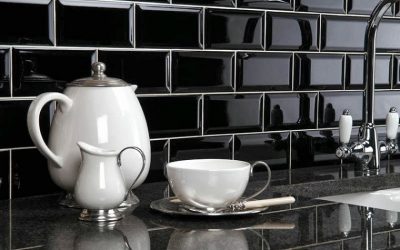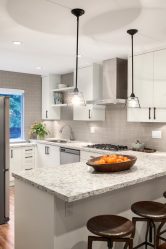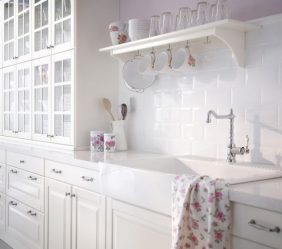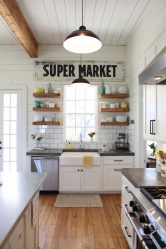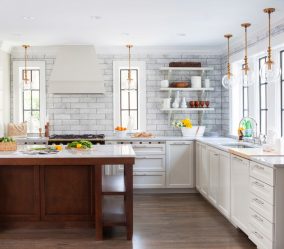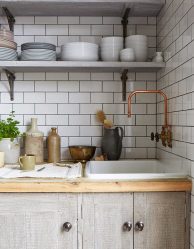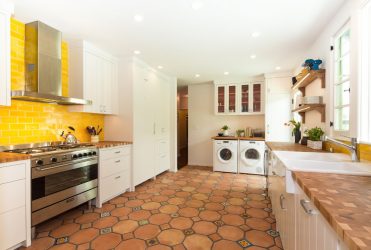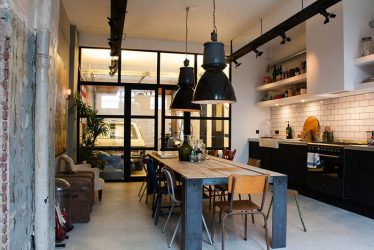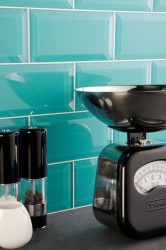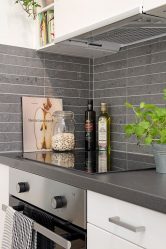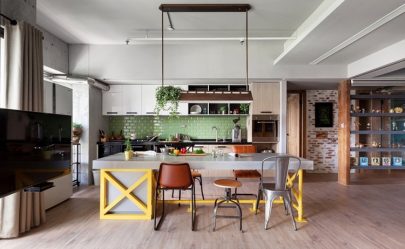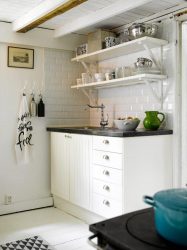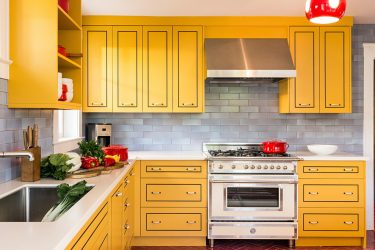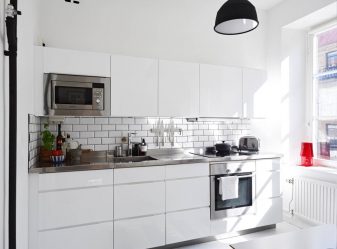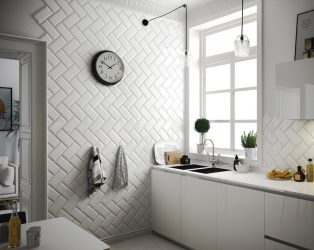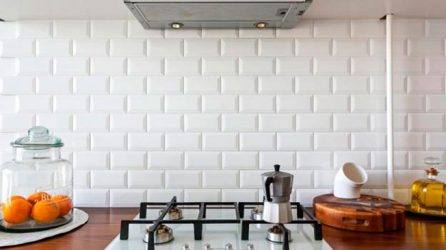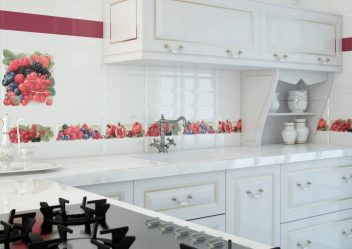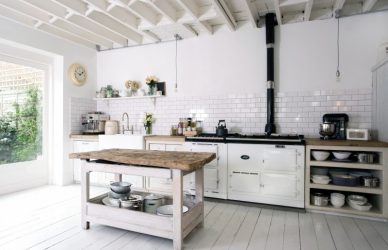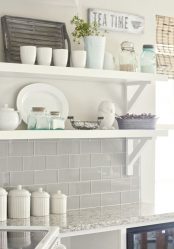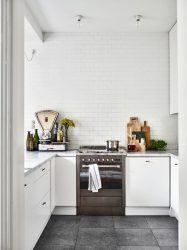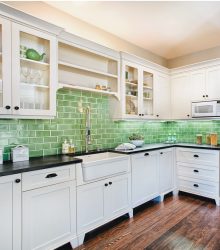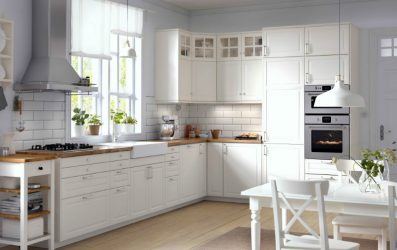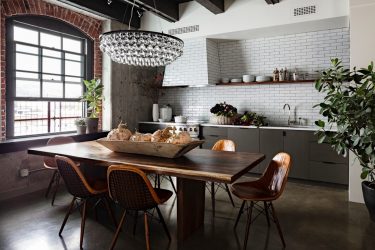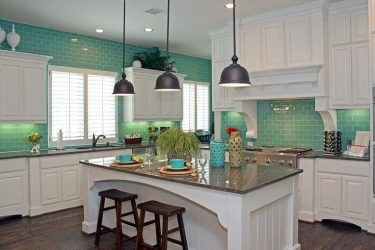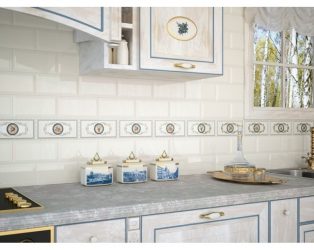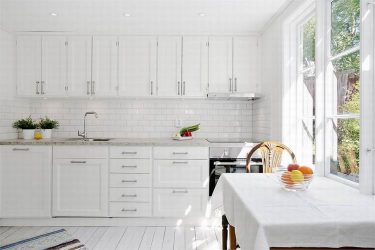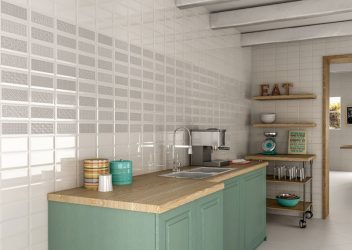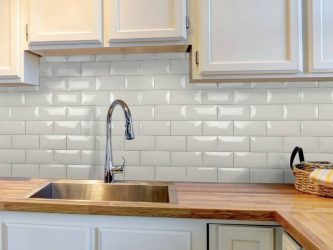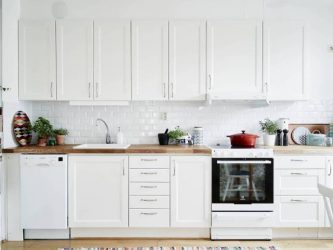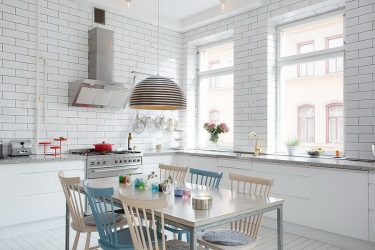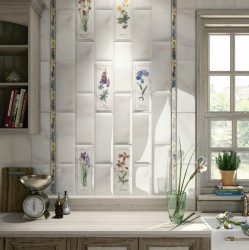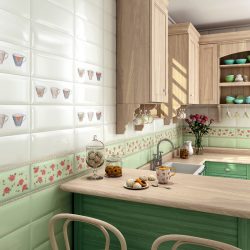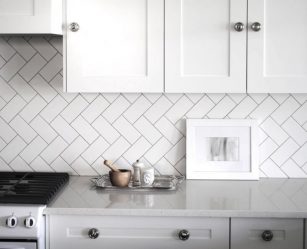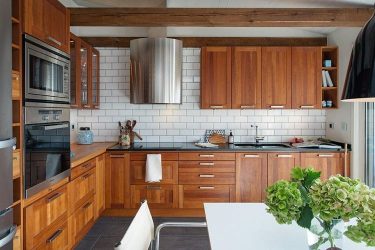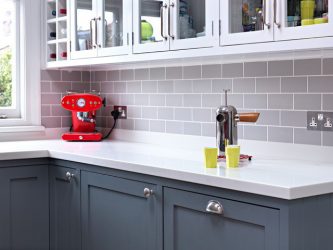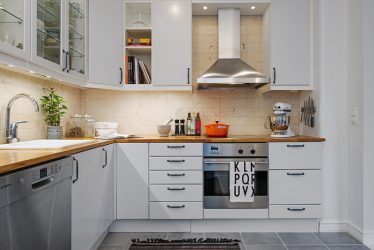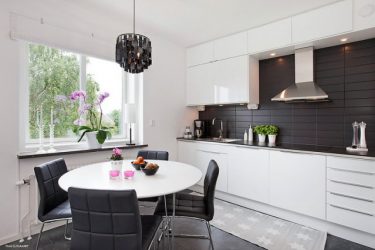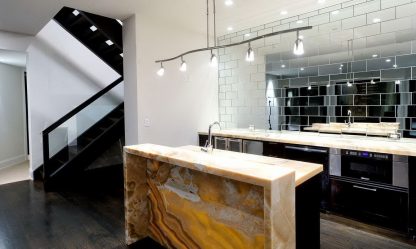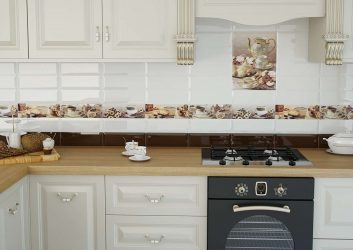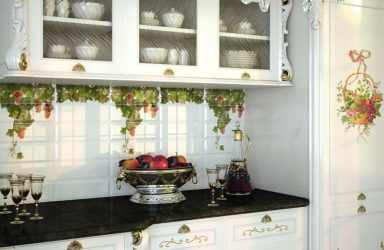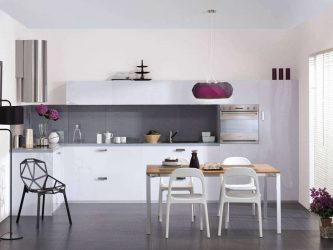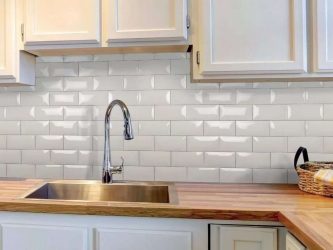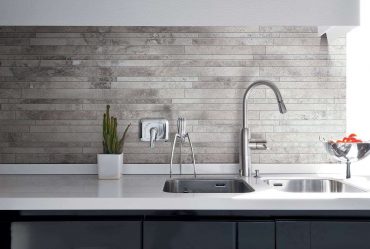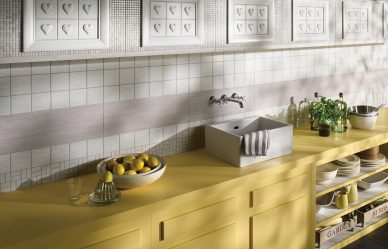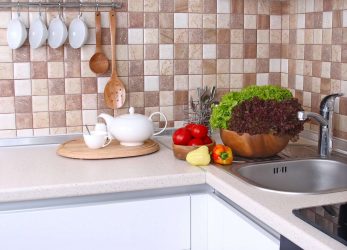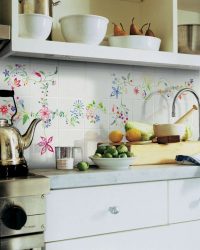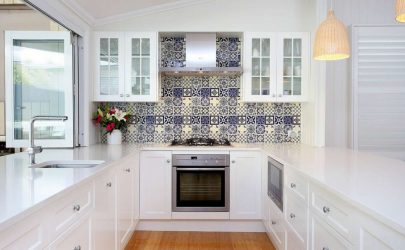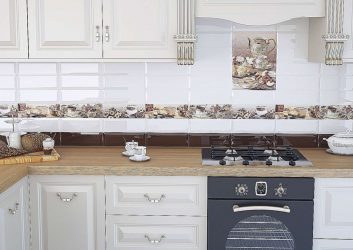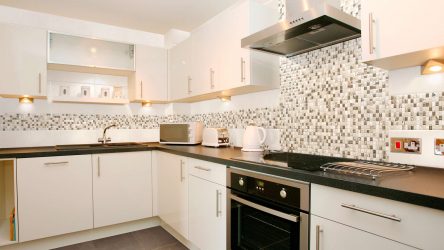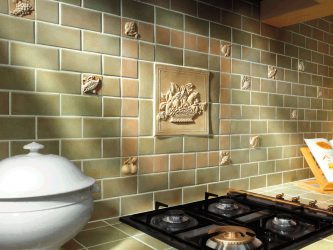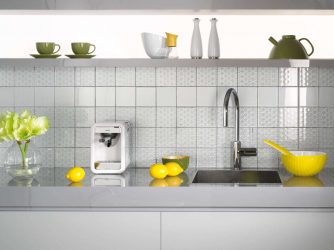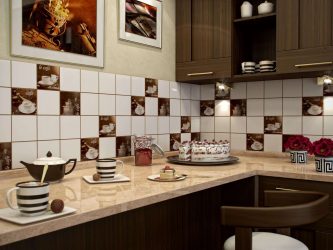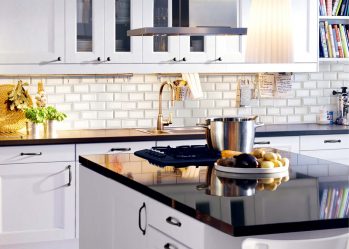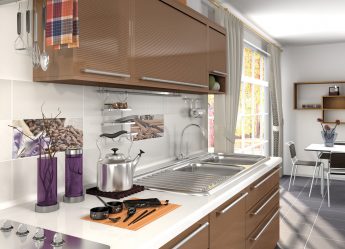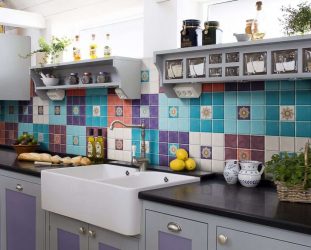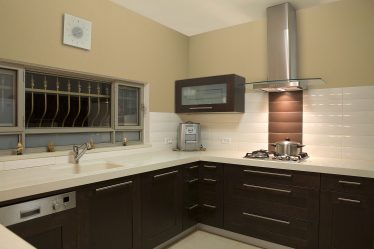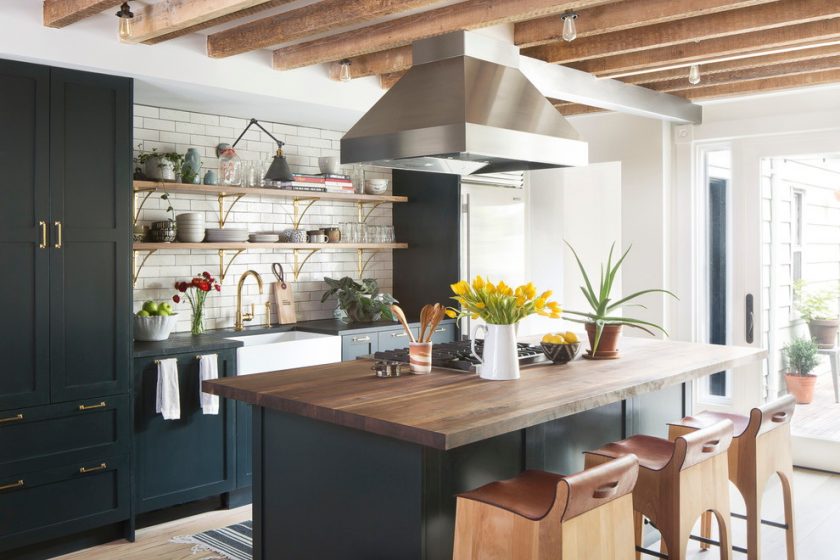
Consider how to beautifully arrange the area in the area of working cabinets in the kitchen, using tiles for the apron. Photo options for finishing tiles and its types are presented in this article.
Content:
Tile varieties
To sale today offered a huge amount of different types of tile material for wall cladding.
A special niche is occupied by products for the kitchen apron area. They are made from the following materials:
- ceramics;
- glass;
- artificial and natural stone.
Appearance of material:
- with glazed, matte, relief, mirror surface;
- square, rectangular, mosaic-shaped, have the appearance of rectangular bricks with cut edges;
- with a monochromatic, ornamental or patterned surface, as well as with a photo plot or in the form of a panel.
Let's learn more about each type of these products, then to choose the tile that is most suitable for the style of your kitchen.
return to menu ↑Ceramic
With a ceramic sign each. This is a classic material that has been used for a long time. It is produced by pressing or extrusion from a mixture of clay and sand.
The classical dimensions of square ceramics: 10x10 cm, 20x20 cm and rectangular - 20x30 cm. The size of the thickness of products 3 - 4 mm.
return to menu ↑Spectacular imitations
Modern execution of the tile used for an apron various: from a palette of color shades, an impressive surface, a decor to products with a photo printing. This gives plenty of imagination for designers.
Particularly spectacular look products with imitation under the skin, wood or stone. Apron made of large-format printing tiles that have a bright, clear image give the kitchen space an exclusive look.
The novelty of ceramic products is small clinker products of rectangular shape, having a small facet around the edges.
They are produced by a special technology that provides products with high strength. The bricks can have both an aged look and be made in the form of glazed snow-white elements.
Exclusively and effectively looks the image of the ceramic, laid out in the form of panels, which may have a different story.
Classic design - kitchen theme with the image of fruits, pastries, dishes and other items.
From mosaic
The apron, made of mosaic, looks spectacular with massive expensive furniture. This facing material is often made by hand.
Materials are: ceramics, glass and other natural products. The mosaic can have many color shades, different shape and surface structure. Therefore, it is easy to choose for any interior style.
It is possible to stack elements according to a pre-arranged pattern of a drawing, or in a chaotic order, using their creative abilities. Thanks to this, you can lay out a unique mosaic pattern.
With the help of mosaic elements often lay out spectacular panels, bright ornaments, sometimes it is even used to create a photo of the plot. Such zones serve as an independent design element and are works of art.
return to menu ↑Glass
The glass tile is a relatively new finishing product, represented by a huge choice of design decoration.
For its manufacture use mostly tempered glass triplex. Kohler or drawing put from the inside. The front surface is smooth, matte or have a relief.
The design can be transparent, matte, under a natural stone, wood, textiles or metal. Glass products can be made in various shapes and sizes. For mosaic small elements most often used glass.
In modern design looks spectacular glass with photo printing.
The advantage of glass material is its resistance to aggressive media and safety in terms of ecology.
However, you need to remember about the tendency of the glass surface to scratch, so you need to care for this with caution without using abrasive materials.
return to menu ↑Mirror
The mirror tile is most often a kind of glass. It is made of impact-resistant glass, on the face of which a silver amalgam is deposited.
Ceramic and polystyrene tiles with a reflective coating are also produced.
They are varieties of mirror tile products, but the composition of their metallized coating does not provide the same reflectivity as that of glass mirrors coated with silver amalgam.
Product Differences
- By the nature of the processing edges. They can be polished, matte, as well as with cut edges.
- The shape, sharing on square, rectangular, curb (narrow stripes), triangular, diamond-shaped, in the form of a mosaic and others.
- On the color palette are silver, with a touch of bronze, gold, graphite and many shades of natural colors.
- According to the design of the surface, which can be: with a pattern in the form of an ornament, an abstract pattern, applied by sandblasting or using thermal printing, as well as simply monochromatic.
The mirror gloss of the apron fits perfectly into the high-tech or modern styles, emphasizing the brilliance of the furniture of kitchen furniture.
The apron from a mirror mosaic well is suitable for the loft style. It looks especially gorgeous from a mosaic assembled from elements of various shapes and sizes.
Mirror looks spectacular, but requires thorough care. Even the smallest fat droplets, traces of dried water are very clearly visible on the mirror surface.
This surface should be cleaned regularly with a damp, soft cloth. There should not be unnecessary kitchen items on the desktop, so that when they are reflected a feeling of cluttering is created.
return to menu ↑From artificial stone
The use of artificial stone for cladding is now very fashionable. Tiled materials from artificial stone look modern and noble.
They are often used in the decoration of interior styles such as loft or Provence.
For the production of artificial stone using technology:
- using concrete mixture with the addition of natural chips;
- with the use of composite materials (polyester resins with the addition of crumb natural components and coloring pigments for maximum similarity with natural stone).
For the apron is also used porcelain, which is often referred to as varieties of ceramic tiles.
But the technology of its production brings this material as close as possible to the natural stone created in nature.
It is made by pressing at high temperature a mixture of white clay, quartz sand, spar and natural dyes.
In appearance, it differs significantly from ceramics, although it also comes with a smooth polished surface, matte, embossed, resembling wood, natural stone, fabric or leather.
Such a variety of surfaces offers designers unlimited space.
Realization from an artificial stone from products:
- Slab representing slabs of large size, preserving the shape of a natural stone pattern. Finishing with slabs is considered the most spectacular;
- stone tiles of rectangular or square shape, reminiscent of ordinary ceramics, which when joining elements form seams;
- mosaic representing blocks of small tiles connected by one base.
The disadvantage of artificial stone is the instability to ultraviolet radiation. It also reacts badly to temperature drops.
Especially you need to protect it from exposure to hot objects: pots, pans and other kitchen utensils, since they can leave marks on the surface in the form of dull spots.
Facing stone can have a lot of different design solutions using different styles.
For example, for the classical style, you can use imitation in marble, onyx or granite, for the Baroque style - a stone for malachite. Porcelain tiles are well supported by Provence or Country style.
return to menu ↑Designer Tips: How to Choose a Design
Even if you are familiar with all the diversity that can be used in the design of a kitchen apron, before choosing it, you must consider the design of this zone, taking into account the designer's advice:
- If the surface should only complement the kitchen furniture, then you need to choose a neutral design.
- If the apron should become a bright central spot of the kitchen, then in the design you can use photo printing, colorful mosaic, panel and other options for colorful design.
- When choosing a bright colorful design, it is necessary to ensure its support with elements of the kitchen interior, which do not compete with it, but harmoniously complement it. Well, if the worktop will be combined in color shades.
- Tiles of bright colors are best used in the design of a large kitchen space; for small kitchens, designers advise using an apron design in soothing pastel colors.
- Tile of small size visually increases the area, large size, on the contrary, narrow the space.
Having studied the characteristics and design examples of the kitchen apron zone, you can decorate this space, armed with design advice.
Kitchen Tiles
Choose your version of the upgrade kitchen apron
